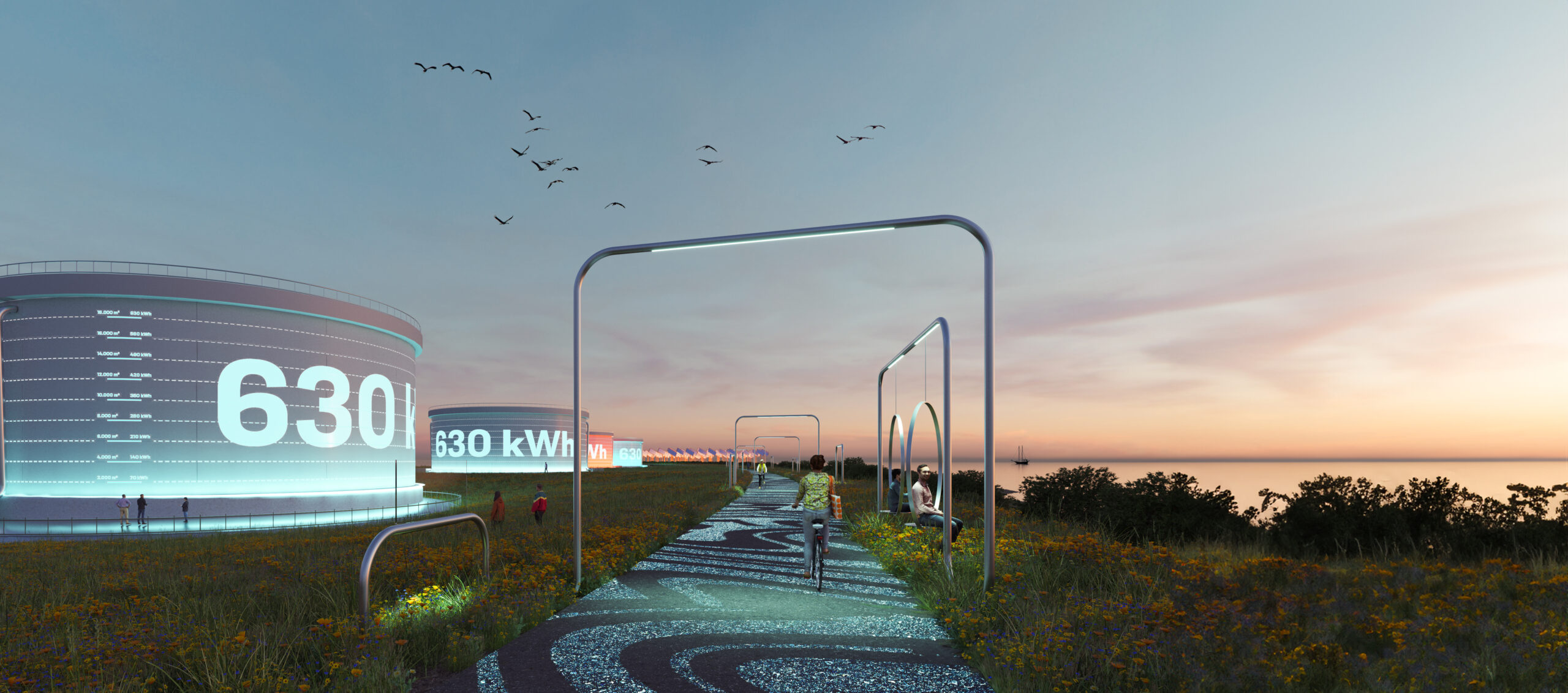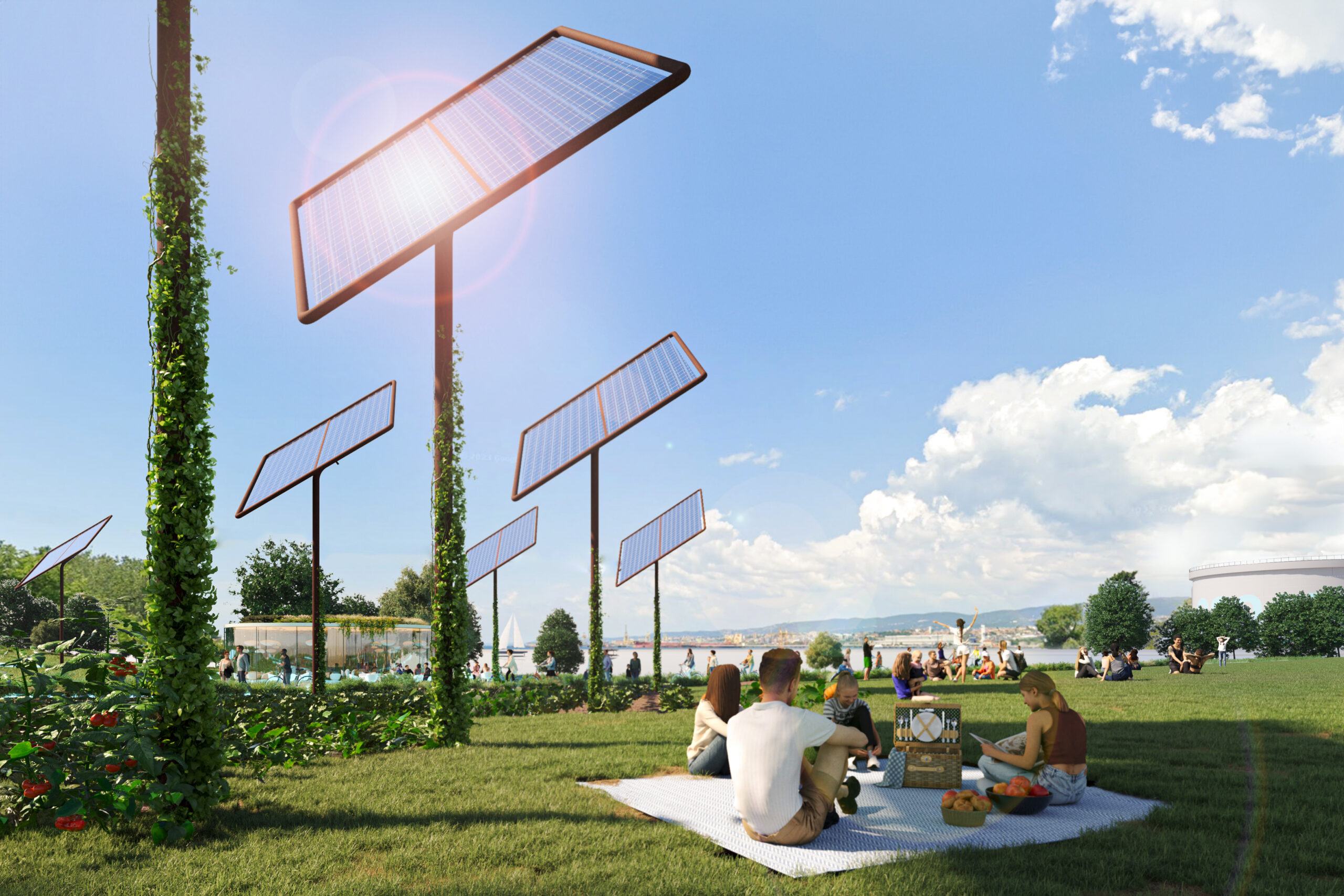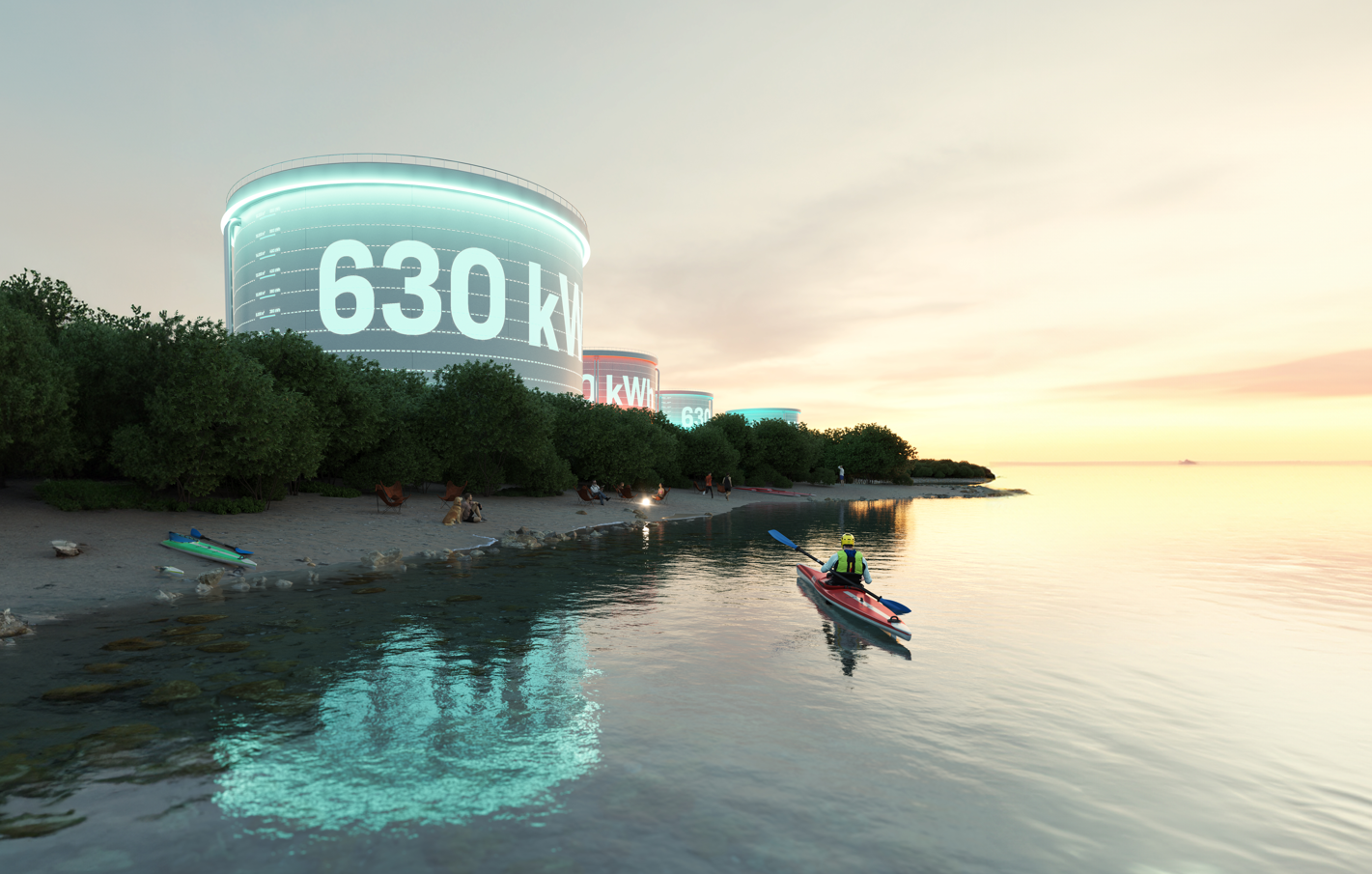- 20 April 2024
- 561 defa okundu.
Water Batteries: Turning an Old Refinery Into a Clean Energy Park
CRA turns a former petroleum refinery plant in Trieste, Italy, into a waterfront park where to test innovative green energy solutions. The project connects former oil tanks to the Adriatic Sea to convert them into clean water batteries.

International design and innovation office CRA-Carlo Ratti Associati has unveiled a master plan for a former oil refinery in the city of Trieste, Italy, transforming it into a renewable energy park.
The design, developed for the Port of Trieste, features tanks converted into ‘water batteries’ as part of a 365,000 square meter reclaimed seafront park.
The project opens up an inaccessible area of the city’s vast industrial port infrastructure facing the Adriatic Sea at its northernmost point.
Suggesting new ways to reuse former industrial facilities, the design employs renewable energy sources in an integrated way.
At the core of the project are six former oil reservoirs – each of them at a height of 15 meters, totaling 110,000 cubic meters of capacity – that will be turned into water batteries.

When there is the need to store power, seawater is pumped up into the tanks and turned into potential energy. Conversely, when power is needed, the stored seawater is used to produce hydroelectric energy, pouring water back into the sea.
The system functions as a small “pumped hydroelectric” plant. The solution is fully renewable as the energy needed to pump up seawater is provided by agrivoltaics – elevated photovoltaic panels scattered across a publicly accessible urban park.
“One of today’s major challenges is the transformation of the 20th-century industrial and energy legacy infrastructure we have in our cities” comments Carlo Ratti, founding partner of CRA and curator of the upcoming Biennale Architettura 2025: “Our project in Trieste manifests this ambition in a striking way – the same pipes that were polluting the environment can now power the green revolution.”
The project was also inspired by the Port of Trieste’s ambition to reimagine the role of urban harbors as sites of shared innovation.
“The future energy infrastructure should not be hidden from public view, as it happened in the past. Rather, it should become part of urban experimentation, allowing a conversation to happen on our future development paths” adds Ratti.

The master plan reconnects the city of Trieste with the neighboring municipality of Muggia.
In addition to the energy facilities, it features green areas, urban farms, and an Innovation Park with a biotech research facility.
The project stands as the most recent example of CRA’s commitment to decarbonizing our cities and thinking about the future of energy.
In Turin, “Floating Above the Flood” transforms the historic Murazzi del Po into a new hub for education and community, using kinetic architecture solutions to create community spaces that fully withstand the river’s recurring floodings.
Helsinki’s decarbonization project “Hot Heart” is based on an archipelago of thermal batteries with the dual function of storing thermal energy to deliver clean energy in the city and serving as a hub for recreational activities.
The Singapore skyscraper “CapitaSpring”, jointly designed with BIG for CapitaLand, features at its core four connected levels of organic softscape dubbed the “Green Oasis” – a 35 m open-air garden bringing nature back to the urban core.

